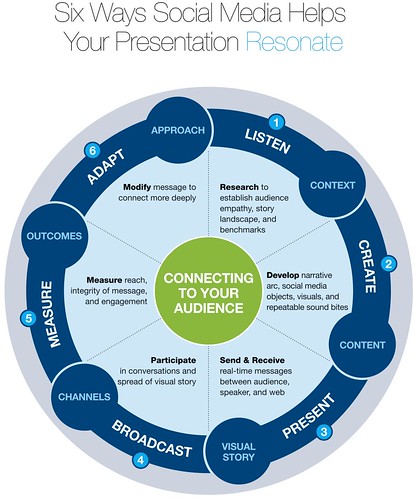Think of the possibility of transforming annual meetings, community listening sessions, and referenda informational meetings into high-engagement occasions where we can remedy misinformation and purposefully clarify ambiguities. It's our chance to allow parents and community stakeholders to . . .
- easily access accurate information,
- allow for a forum of discussion (which they are going to have anyhow) in a place where people access to infographics, slideshows, and/ or videos,
- impel the facts through social networks that we don't normally have access to.
Here, Reynolds talks to a group of Google employees about his expertise in 2008. Some of his references are a bit outdated, but the advice still holds very strong.
Jazzing up the actual PowerPoint isn't the only thing you should do to prevent the dull, sleep-inducing ambiance of the typical presentation. By appropriately incorporating social media into your presentation, you also allow your message to reach a larger audience and allow for a method of discourse.
Take, for example, Brian Solis's graphic below on how to extend the influence of your presentation by utilizing social media. This is as much a measure engagement as it is a way to let your presentation (as Solis says) "resonate."
According to Solis, before presenting at all, we should listen in order to establish who the audience is and what the critical issues are. The progression of creation, presenting, broadcasting, measuring and finally adapting is latent with opportunity to research with Ning, develop context and content with Google Forms, send and receive messages with back-channels during presentations, participate in the audience debriefing after the presentation through Twitter, measure echo and accuracy your message through Facebook, and finally modify your message in response to ambiguity via a blog.

We've all been there: Low-light, water glasses and ice click, a cherry-wood podium, a guy a with tie reading from slides. Take a step into what seems unconventional but really is more effective by recalibrating how you present and how you purposefully strengthen your message.
No comments:
Post a Comment